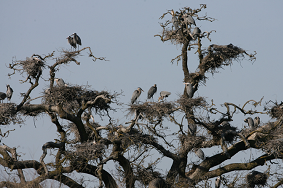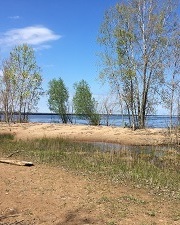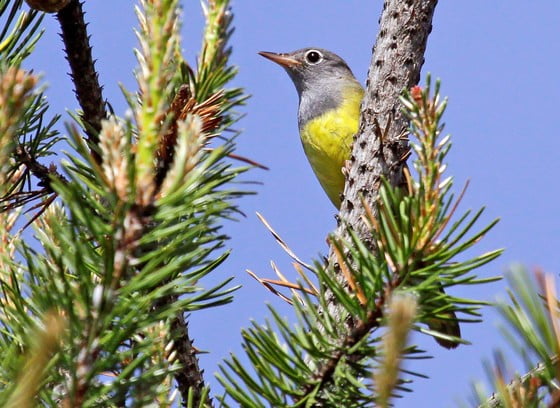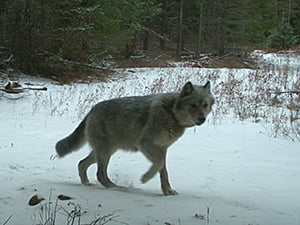
Upper Peninsula fish and wildlife in the lower Menominee River have recovered following a decade-long environmental restoration effort by local volunteers, the Office of the Great Lakes, the Wisconsin Department of Natural Resources, and federal Environmental Protection Agency.
This work benefits Michigan and Wisconsin communities on either side of the river by supporting populations of sportfish and threatened lake sturgeon, beneficial pollinators, waterfowl and other species.
Solving the problem of disappearing wildlife
 Valuable habitat was historically lost on the Menominee River due to wetland destruction, invasive species, the cutting-off of fish spawning areas, and “shoreline hardening” – the construction of armored seawalls. Valuable habitat was historically lost on the Menominee River due to wetland destruction, invasive species, the cutting-off of fish spawning areas, and “shoreline hardening” – the construction of armored seawalls.Work to restore fish passage upstream of the Menominee and Park Mill dams included installation of a “fish elevator” that reopened 1400 acres of spawning habitat. The stretch of river had been closed off for years, and biologists anticipate that the reconnection will increase survival rates of young fish. |
 Native habitat was restored on the Blueberry, Little Blueberry, Strawberry, and Boom islands in the river; birdwatchers have observed the return of a heron and great egret rookery on Strawberry Island, which had been taken over by invasive plants. Local volunteers helped with monitoring, cleanups, and planting native shrubs and flowers. Native habitat was restored on the Blueberry, Little Blueberry, Strawberry, and Boom islands in the river; birdwatchers have observed the return of a heron and great egret rookery on Strawberry Island, which had been taken over by invasive plants. Local volunteers helped with monitoring, cleanups, and planting native shrubs and flowers.Additionally, 51 acres of wetland and upland habitat were restored around the Menominee River’s south channel and Menekaunee Harbor. “This restoration helps reconnect the Menominee River to the Great Lakes and reconnect our communities to nature,” said Jon W. Allan, Director of the Michigan Office of the Great Lakes. Support for the work totaling just over $20 million was provided through the Great Lakes Restoration Initiative and by state and local partners. |
Michigan’s AOC Program: healing legacy impacts to our waters
 Environmental impacts from historic pollution and habitat destruction earned the lower three miles of the Menominee River an “Area of Concern” designation under the 1987 Great Lakes Water Quality Agreement. Negative effects impacted communities with problems like disappearing wildlife, labeled “Beneficial Use Impairments” (BUIs). This recovery is the official removal of the “Fish and Wildlife Habitat” and “Fish and Wildlife Populations” BUIs by state and federal officials. Environmental impacts from historic pollution and habitat destruction earned the lower three miles of the Menominee River an “Area of Concern” designation under the 1987 Great Lakes Water Quality Agreement. Negative effects impacted communities with problems like disappearing wildlife, labeled “Beneficial Use Impairments” (BUIs). This recovery is the official removal of the “Fish and Wildlife Habitat” and “Fish and Wildlife Populations” BUIs by state and federal officials.This milestone marks Michigan’s 49th and 50th BUI removals, down from an original 111. With these impairment designations lifted, OGL staff anticipate celebrating the river’s removal from the Areas of Concern list. Two other AOCs, White Lake and Deer Lake, have been declared recovered; 11 others have restoration activities in progress. Learn about work to protect, restore and sustain Michigan’s waters from the Michigan Office of the Great Lakes. Contact Rachel Coale or Stephanie Swart with questions. |

